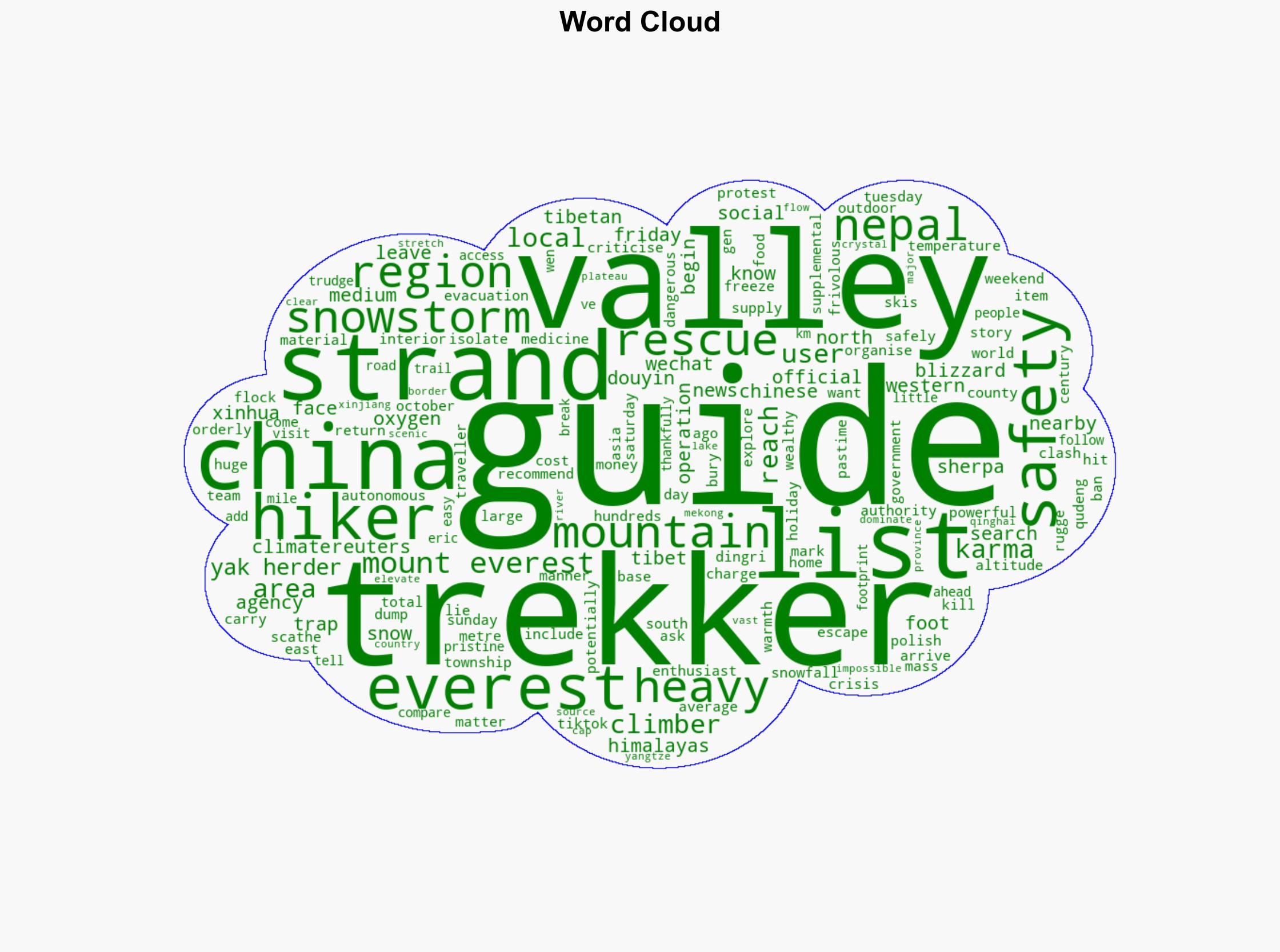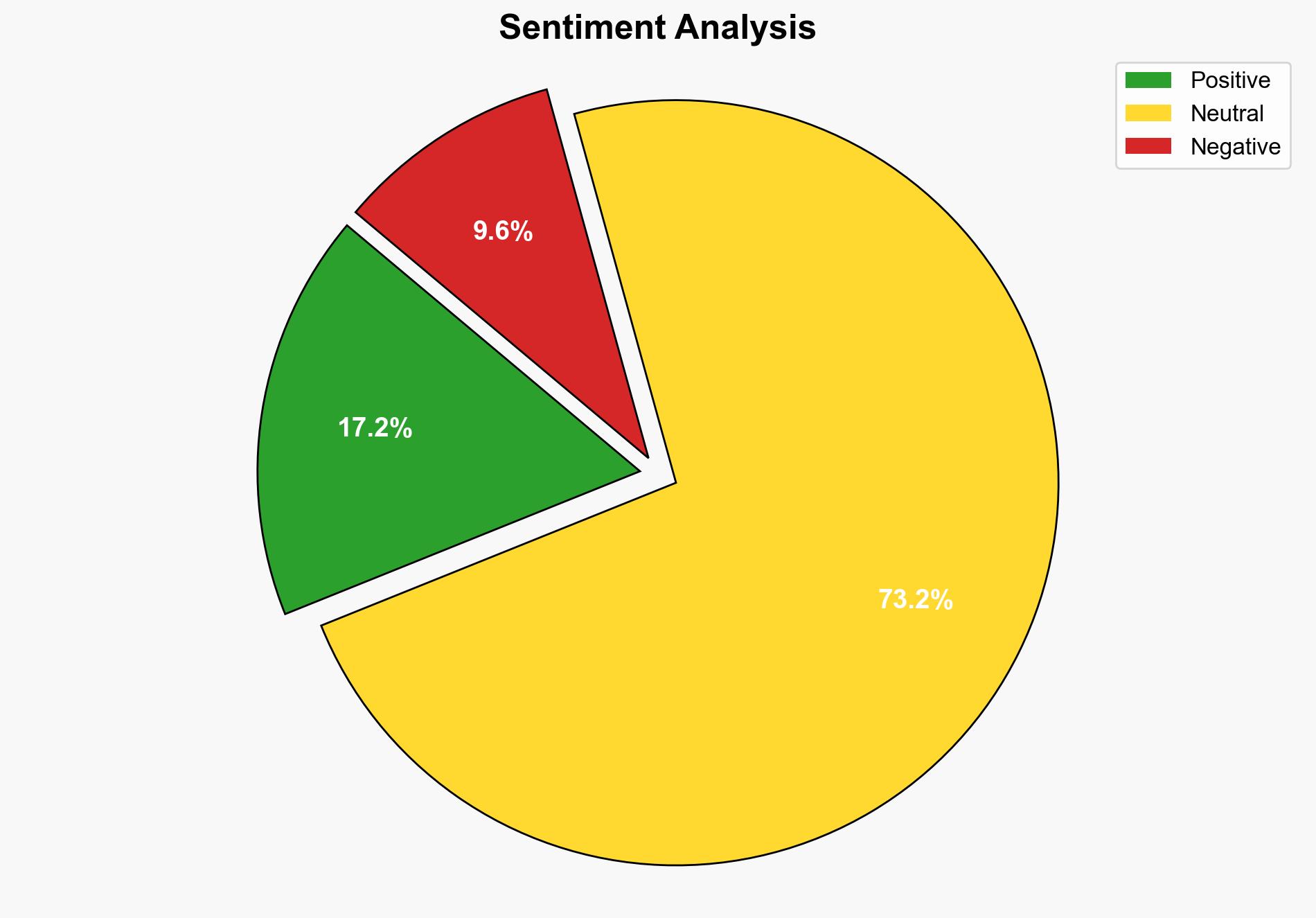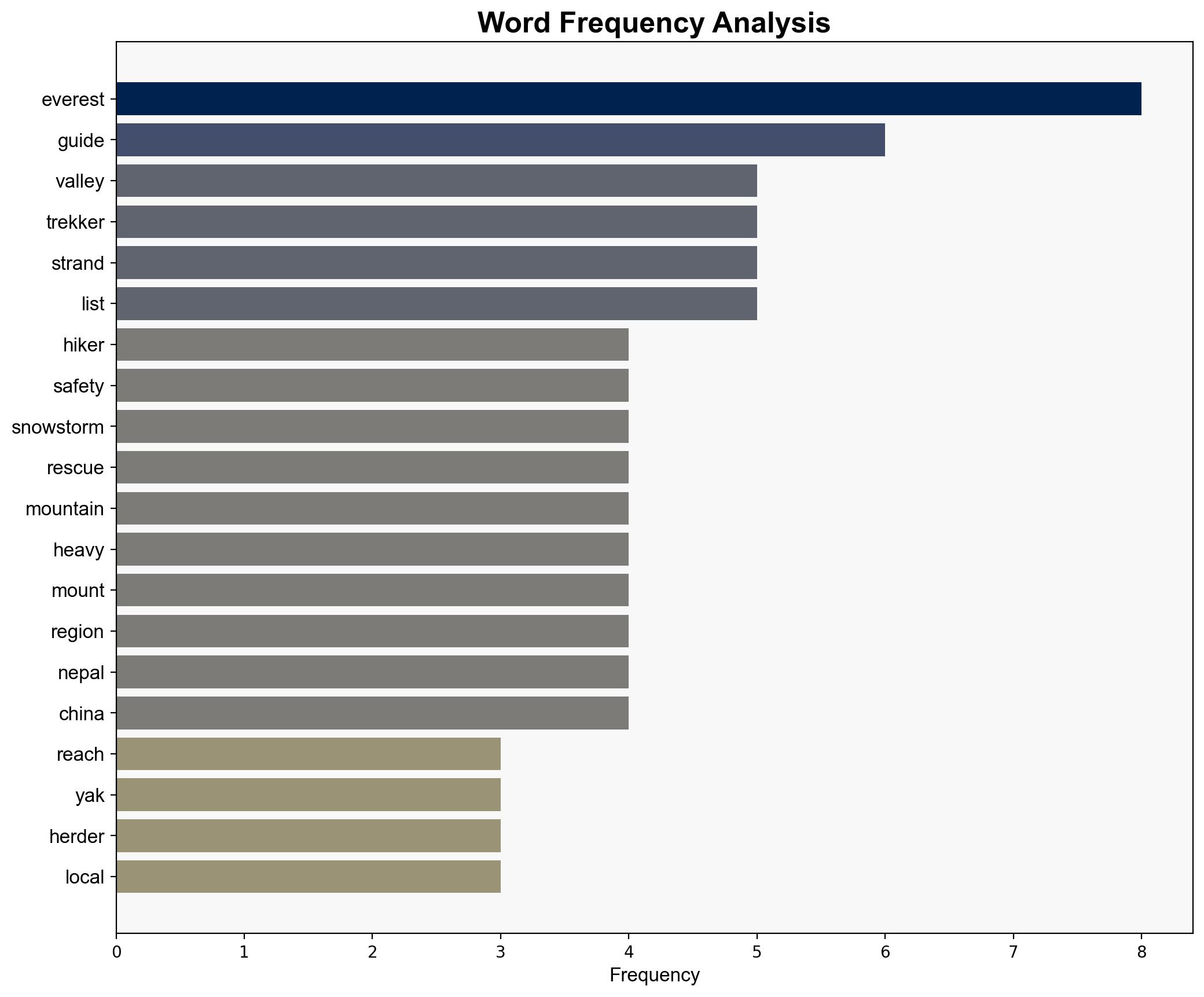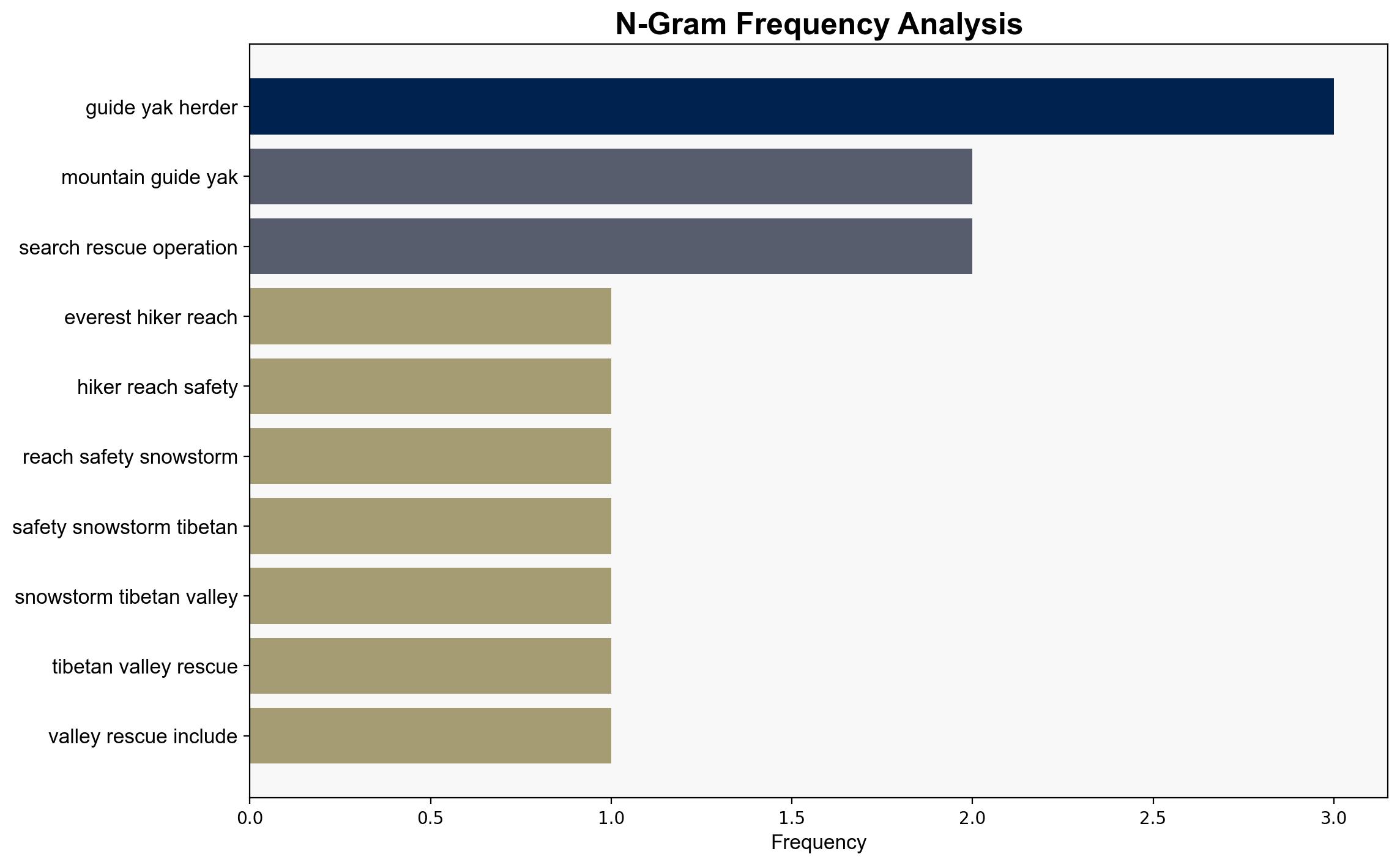Hundreds of Everest hikers reach safety after snowstorm in Tibetan valley – Al Jazeera English
Published on: 2025-10-08
Intelligence Report: Hundreds of Everest hikers reach safety after snowstorm in Tibetan valley – Al Jazeera English
1. BLUF (Bottom Line Up Front)
The most supported hypothesis is that the snowstorm incident was primarily a natural disaster exacerbated by climate change, impacting the safety of trekkers and local guides. Confidence level: Moderate. Recommended action includes enhancing early warning systems and improving coordination for rescue operations to mitigate future risks.
2. Competing Hypotheses
1. **Natural Disaster Hypothesis**: The snowstorm was a natural event, intensified by climate change, leading to the entrapment of hikers and guides. This hypothesis is supported by the mention of unpredictable climate conditions in the Himalayas and the increasing frequency of dramatic climate shifts.
2. **Human Error and Mismanagement Hypothesis**: The incident resulted from inadequate preparation and poor management of trekking activities, compounded by the influx of tourists during a national holiday. This is supported by criticism on social media regarding the frivolous nature of such activities in dangerous areas and the logistical challenges faced during the rescue.
3. Key Assumptions and Red Flags
– **Assumptions**: The Natural Disaster Hypothesis assumes that climate change is the primary driver of the snowstorm’s severity. The Human Error Hypothesis assumes that the management of trekking activities was insufficient.
– **Red Flags**: The lack of detailed information on the preparedness of the trekkers and guides raises questions about the adequacy of safety measures. The social media criticism may indicate a bias against tourism in the region, potentially skewing public perception.
4. Implications and Strategic Risks
The incident highlights the vulnerability of tourism-dependent regions to natural disasters, which could lead to economic impacts if perceived as unsafe. The role of climate change in increasing the frequency of such events poses a long-term risk to the safety and sustainability of trekking activities. Additionally, the criticism on social media could influence public opinion and policy regarding tourism in sensitive areas.
5. Recommendations and Outlook
- Enhance early warning systems and communication networks to provide timely alerts to trekkers and guides.
- Improve coordination among local authorities, rescue teams, and tourism operators to ensure efficient response to emergencies.
- Scenario Projections:
- Best Case: Implementation of robust safety measures leads to reduced risk and sustained tourism growth.
- Worst Case: Continued incidents result in decreased tourism and economic decline in the region.
- Most Likely: Incremental improvements in safety protocols with moderate impact on tourism dynamics.
6. Key Individuals and Entities
– Eric Wen (commented on the difficulty of the trek)
– Xinhua News Agency (reported on the rescue operation)
– Reuters News Agency (provided additional reporting)
7. Thematic Tags
natural disasters, climate change, tourism management, regional safety, emergency response





